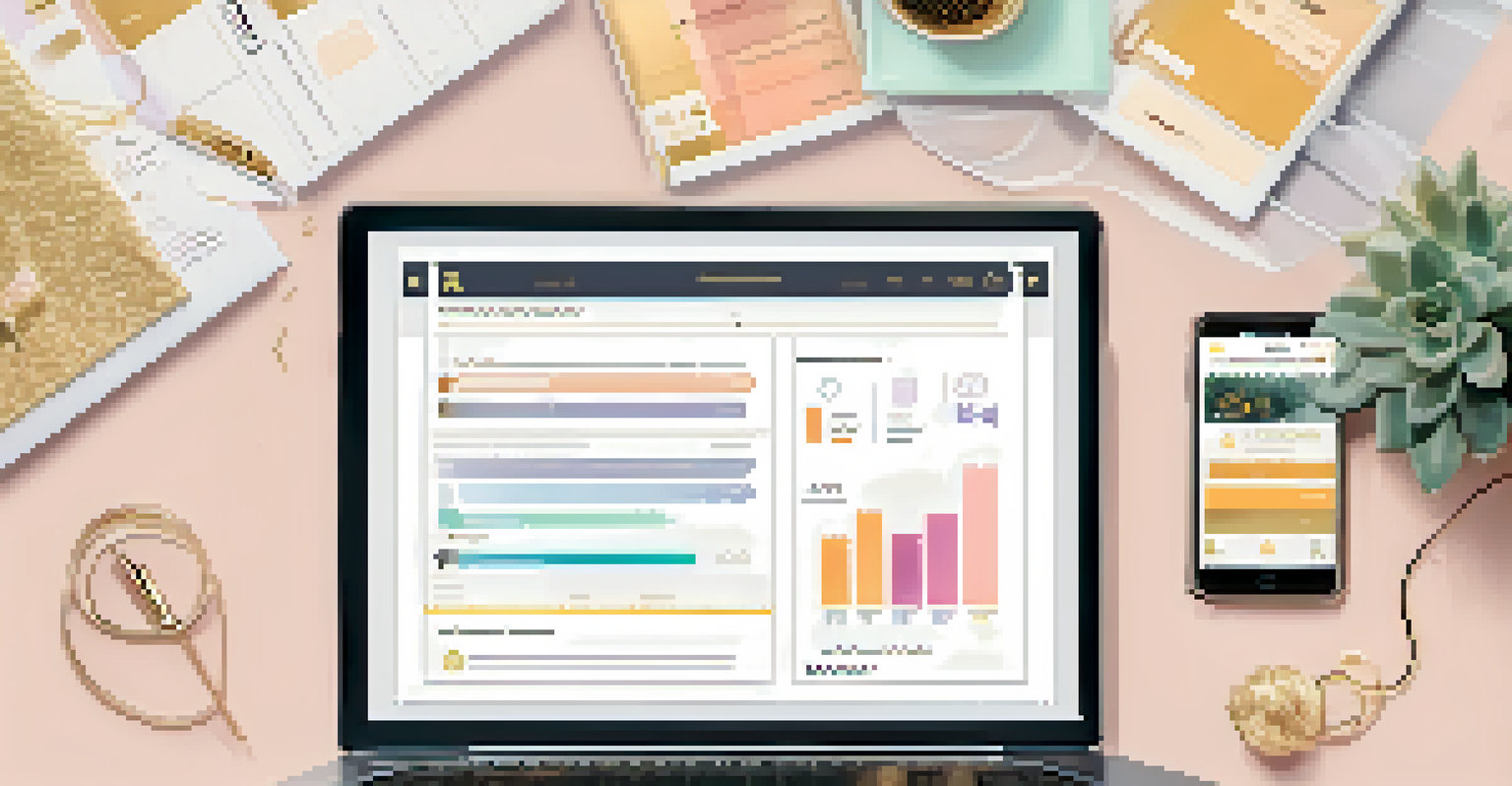Identifying Key Influencers for Business Development

Understanding the Role of Influencers in Business Growth
Influencers play a crucial role in shaping public opinion and driving consumer behavior. They can help amplify your brand's message and reach a wider audience, making them essential for business development. By leveraging their influence, businesses can build credibility, attract new customers, and foster loyalty among existing ones.
Influence is about being authentic and being real. It's about connecting with your audience and having them trust you.
Think of them as modern-day word-of-mouth marketers who have the power to sway their followers' decisions. Their endorsement can often lead to increased sales and brand awareness. Thus, identifying the right influencers who align with your brand values is a key step in developing an effective business strategy.
Ultimately, influencers can act as bridges between your brand and potential customers, providing a trusted voice that resonates with the audience. As you navigate the landscape of influencer marketing, understanding their significance will set the stage for successful collaborations.
Defining Your Target Audience for Better Alignment
Before you can identify key influencers, it's essential to have a clear understanding of your target audience. Knowing who your ideal customers are will help you find influencers who speak to that demographic. For instance, if your business targets millennials, collaborating with influencers popular among that age group will yield better results.

Creating detailed buyer personas can aid in visualizing your audience's preferences, interests, and pain points. This process ensures that the influencers you choose resonate with your target market. When the right influencer aligns with your audience, the partnership naturally feels authentic and engaging.
Influencers Boost Brand Awareness
Influencers amplify brand messages, enhance credibility, and drive consumer behavior.
Remember, it’s not just about the number of followers an influencer has, but how well they connect with your desired audience. A smaller influencer with a highly engaged following often proves more valuable than one with millions of followers but minimal engagement.
Researching Influencers in Your Industry
Once you've defined your target audience, the next step is to identify potential influencers within your industry. Utilize social media platforms, blogs, and forums to discover individuals who are actively discussing topics relevant to your business. Tools like BuzzSumo and Followerwonk can help streamline this research process.
The power of influence is not in the size of your audience, but in the depth of your connection with them.
As you gather data on potential influencers, pay attention to their content quality, engagement levels, and audience demographics. Look for influencers who not only have a significant following but also create content that resonates with your brand’s message. This alignment ensures that their endorsement feels genuine to their audience.
Don’t hesitate to reach out to your network for recommendations, as personal connections can lead to fruitful collaborations. By tapping into your industry circles, you can gain insights into who the key players are and how they can benefit your business development efforts.
Evaluating Influencers: Metrics and Engagement
Evaluating influencers goes beyond just looking at follower counts; engagement metrics are equally, if not more, important. Analyze likes, shares, comments, and overall interaction on their posts to gauge how actively their audience engages with their content. High engagement rates suggest that the influencer has a loyal and attentive following.
Another aspect to consider is the influencer's content relevance and consistency. Review their previous collaborations and the type of brands they usually endorse. This will give you insight into whether they align with your brand values and marketing goals.
Know Your Target Audience
Understanding your ideal customers helps in selecting influencers who authentically connect with them.
Lastly, consider the influencer's authenticity. Genuine influencers often have a more profound impact on their audience, making their recommendations more persuasive. Spotting authentic influencers can be the key to forming a successful partnership that benefits both parties.
Building Relationships with Influencers
Once you've identified potential influencers, the next step is to build a relationship with them. This can start with engaging with their content by liking, sharing, or commenting on their posts. Showing genuine interest can help you stand out and create a connection before you approach them for collaboration.
Consider reaching out via direct messages or emails to introduce yourself and your brand. Personalize your message by referencing their work or specific posts that resonated with you. This approach demonstrates that you value their content and are genuinely interested in collaboration.
Remember, building relationships takes time, so be patient. By fostering a genuine connection, you increase the likelihood of a mutually beneficial partnership that can enhance your business development efforts.
Crafting a Compelling Collaboration Proposal
Once you've established a relationship, it’s time to craft a collaboration proposal that captures the influencer’s interest. Be clear about what you’re offering and how it will benefit both parties. Whether it’s a product review, sponsored content, or a co-hosted event, make sure the proposal aligns with the influencer's content style.
Highlight the mutual benefits of the collaboration. For instance, if you’re offering a product, emphasize how it fits their audience's interests. Providing incentives, such as exclusive discounts or free products, can also be an attractive proposition for influencers.
Measure Collaboration Success
Setting clear KPIs and using analytics tools allows you to evaluate the effectiveness of influencer partnerships.
Finally, be open to their input. Influencers know their audience best, so collaborating on the proposal can lead to a more tailored and effective partnership. This flexibility can foster a positive working relationship and enhance the overall success of the collaboration.
Measuring the Success of Your Influencer Partnerships
After launching your influencer collaborations, it’s important to measure their effectiveness. Set clear KPIs (Key Performance Indicators) such as engagement rates, website traffic, or sales conversions to evaluate the partnership's success. This data will help you understand what worked well and what areas may need improvement.
Using analytics tools can provide valuable insights into how the influencer's content performed. Pay attention to metrics like reach, impressions, and audience feedback to assess the overall impact. This analysis not only helps in refining future collaborations but also in understanding your audience better.

Ultimately, measuring success is about learning and adapting. By regularly reviewing your influencer partnerships, you can continuously enhance your business development strategies and ensure they align with your overall marketing goals.